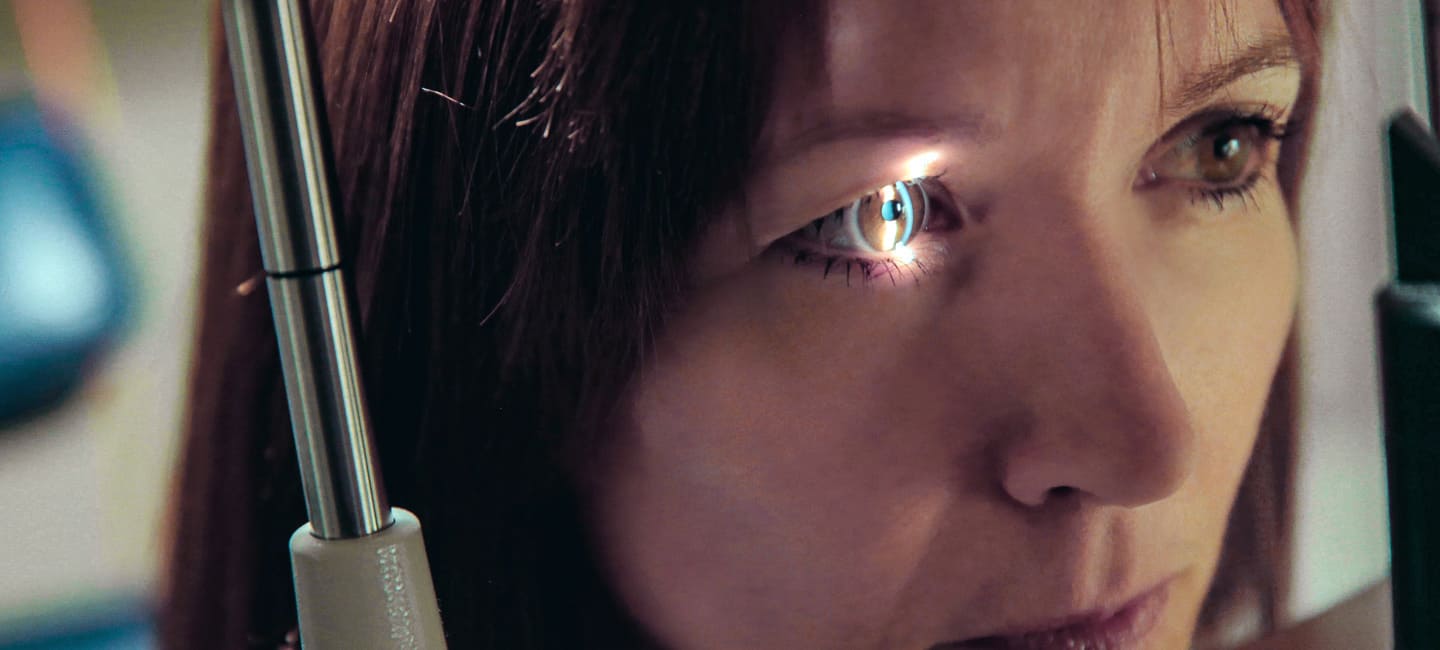Refractive Lens Exchange (RLE) is a type of vision correction surgery that is an alternative to LASIK, PRK, or SMILE.
RLE corrects unfocused vision by replacing the crystalline lens in your eye with an artificial intraocular lens implant (IOL). Replacing the lens allows light to focus correctly on your retina. It is very similar to cataract surgery, but your life after RLE surgery will include clear and focused vision.
What is Refractive Lens Exchange (RLE)?
Refractive Lens Exchange replaces the lens in your eye with an artificial lens to correct refractive errors. In order for us to see, light comes into the eye and the crystalline lens focuses it on to the retina in the back of your eye. If the lens in your eye is too strong or too weak, the light cannot focus properly. This can cause blurry vision.
The RLE procedure is nearly identical to cataract surgery. The main difference is the state of your eye before the surgery and the goals for after the surgery. During cataract surgery, your surgeon removes a cloudy lens and replaces it with an intraocular lens implant (IOL). The goal is to remove the obstruction from your vision.
During an RLE procedure, a surgeon removes a clear or slightly discolored lens and replaces it with an IOL. The new lens corrects any refractive errors such as myopia (nearsightedness), hyperopia (farsightedness) or astigmatism, and providing vision freedom by reducing or eliminating the need for glasses or contact lenses.
Monovision vs Multifocal Lenses vs Toric Lenses?
The type of lens placed in the eye is dependent on the degree of myopia, hyperopia and astigmatism of each patient, and the preference of the patient. The different IOLs that can be used for RLE at the Filutowski Cataract & LASIK institute are as follows:
- Monofocal: A monofocal (single focus) IOL can be implanted. This would provide correction for either distance or near vision but not both. Monovision is a common option. Here, Dr. Filutowski would implant two different IOLs – one eye would be for distance and one eye would be for near vision. Many patients choose this option because it allows you to read without the assistance of reading glasses.
- Multifocal: A multifocal IOL provides good vision at long distance, intermediate and near.This lens more closely mimics your natural vision by allowing you to focus on distant and near objects with the same eye. The multifocal IOL is the most popular option with our patients.
- Toric: A toric IOL is a monofocal lens that helps to correct astigmatism. Astigmatism occurs when your cornea or lens is misshapen (more like a football than a basketball) and refracts light in many directions instead of just one. Toric lenses can come in monofocal or multifocal options.
What are the benefits of RLE Surgery?
Life after RLE surgery will hopefully include clear and focused vision. It is a great alternative for patients whose farsightedness or nearsightedness is too challenging to be corrected by other types of laser vision correction.
Aside from a reduced dependence on glasses and contact lenses, RLE offers many benefits that other types of laser eye surgery cannot. These include:
- Minimal corneal disturbance: LASIK, PRK, and SMILE all correct refractive errors by reshaping the cornea (the outermost layer of the eye). In RLE no tissue is removed from the cornea.
- No need for future cataract surgery: If you do not have a natural lens in your eye, it cannot degrade and form a cataract over time! By opting to undergo an RLE procedure, you are eliminating your chances of developing a cataract and dealing with the cloudy vision associated with them.
- Treatment for presbyopia: Multifocal IOLs can treat the loss of near focusing power that comes with age. This loss of near focusing power is part of a greater phenomenon known as Dysfunctional Lens Syndrome (DLS). With age, your crystalline lens becomes less effective at focusing the light on your retina. Consequently, the best possible vision you can have with glasses or contacts becomes less clear with DLS. By replacing your lens, we improve your best corrected vision. Other types of laser vision surgery cannot correct presbyopia.
RLE is often the preferred procedure for patients who are older or have more severe myopia or hyperopia. This stands even if they are candidates for LASIK, PRK or SMILE as well because of the benefits listed above.
Ideal candidates for RLE Surgery
As with other refractive eye surgeries like LASIK, PRK or SMILE , candidates for refractive lens exchange surgery should:
- Want freedom from glasses or contact lenses
- Be 21 year of age or older
- Have stable vision (no change in your contact or glasses prescription for at least three months or up to six month as determined by our doctors)
- Have healthy eyes with no history of eye disease
- Understand and be willing to accept the risks associated with RLE surgery
Additionally, patients who we recommend for RLE surgery instead of other vision correction surgeries such as LASIK, PRK, or SMILE generally are:
- 40 years of age or older and therefore slightly presbyopic
- More hyperopic (farsighted) than can be corrected with other refractive surgeries
- Developing early stage cataracts
As we get older, the lenses in our eyes thicken and lose flexibility. This phenomenon is known as presbyopia, and can be the reason you need reading glasses later in life. By replacing the lens in your eye, a refractive lens exchange can correct this presbyopia. It also eliminates your chance of developing cataracts later in life or removes any mild degree of cataracts that have already started to form.
What to Expect after RLE Surgery
Immediately after RLE Surgery your may notice blurry vision. Your eye was anesthetized and dilated during the surgery. As your pupil retracts and the anesthesia wears off, the operative eye should provide a noticeable improvement to your vision.
The first few days after RLE surgery, you might still have a bit of blurry vision, see starbursts or halos around lights at night, and have the “grain of sand” (foreign body) sensation. All of these are normal and are a result of your eye healing from the trauma of surgery.
During the first and second weeks after RLE surgery, you will experience the more noticeable improvements to your vision. These changes could happen from day to day or even morning to night.
Within three to four weeks after RLE surgery, your eye should heal and your vision should stabilize. The side effects you might have experienced during the first days following your refractive lens exchange should subside with time during the RLE recovery process.
Conclusion
RLE is a different approach to elective refractive procedures than laser vision correction such as LASIK, PRK or SMILE. It works by replacing the lens in your eye instead of reshaping your cornea. With a new, artificial lens, patients are unable to develop cataracts and, therefore, eliminate the need for a cataract surgery down the line.
If you are interested in any type of vision correction surgery, think RLE might be the choice for you or just want more information please contact us here or call 800-393-3926 to speak with one of our counselors








